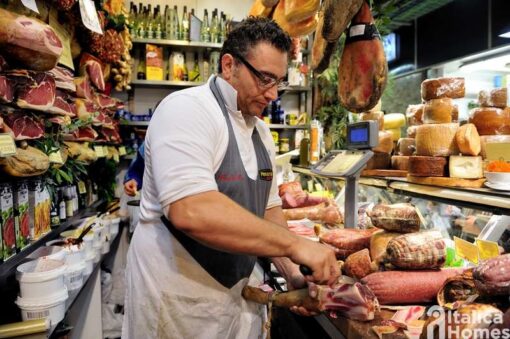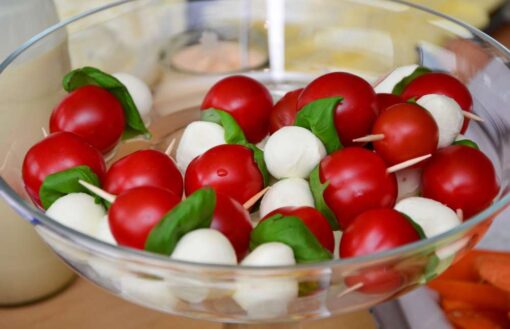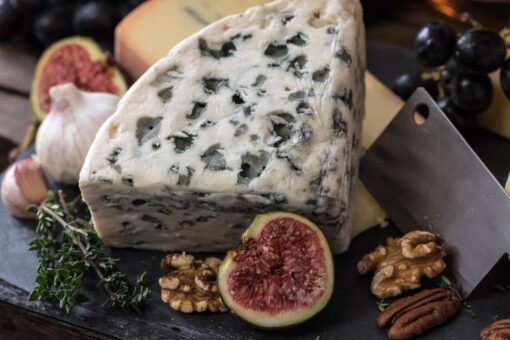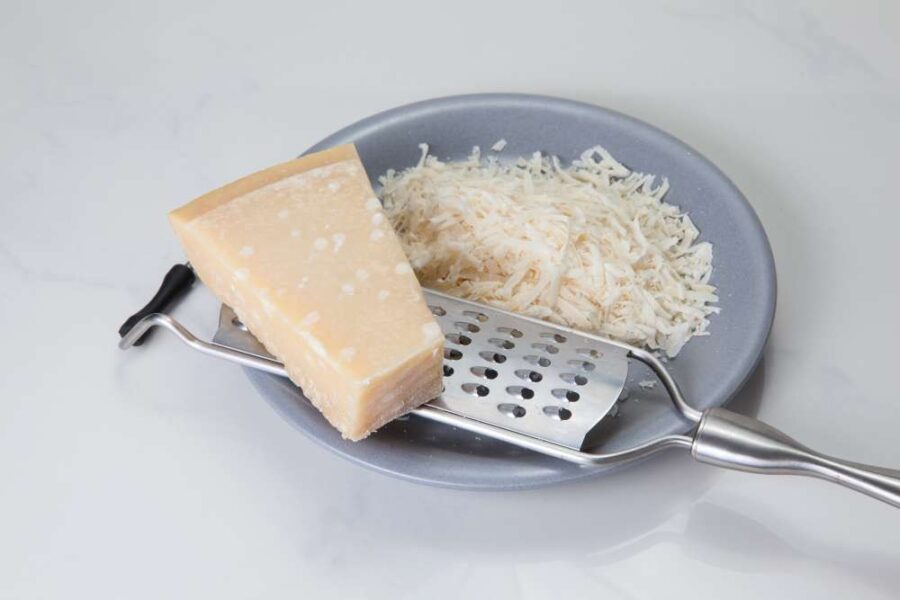
Italian cheese
Cheese is a product that is obtained from processing not only cow’s milk, but also sheep and goat’s. Widespread in all Italian regions, with a wide range of types, cheese has its roots in the pastoral tradition of the place of origin. Each cheese, in fact, carries within itself the history of a territory, the traditions of a people, as well as the production and conservation techniques handed down from generation to generation. All characteristics that have made the various Italian cheeses famous even abroad. In this regard, it should be remembered that the export of Italian cheeses has recorded an absolute record in recent years, with a constantly growing trend, so much so as to confirm Italy as one of the largest producers and exporters of this product in the world. As proof of how much Italian cheeses are appreciated in Countries with different food cultures. Almost a quarter of exports go to France, Germany and the UK. And then United States, Japan and China.
In an agricultural Country like Italy, milk has always played an important role in nutrition. In this context, dairy production has made it possible to transform a perishable product such as milk into a long-life product such as cheese. This advantage has allowed the spread of this tradition, giving life to a great variety of cheeses, each with its own flavor and taste. Often these products have a recognized and protected designation of origin also at European level (PDO and PGI). Among the many typical Italian cheeses we remember Pecorino Sardo, Taleggio, Fontina, Grana Padano and Parmigiano Reggiano. But also buffalo mozzarella and Gorgonzola. All examples of cheeses known and appreciated throughout the world as an Italian specialty.







Let’s see below some of the most famous Italian cheeses:
ASIAGO
Asiago is a cheese produced in Veneto and born over 1000 years ago, with a predominantly sweet and delicate taste. It is a PDO cheese made from cow’s milk. Its maturation can take up to two years and each form of cheese can weigh between 11 and 15 kg. The crust is thin while the dough is soft, buttery. The type of “very old” (“stravecchio”) Asiago, on the other hand, is aged for two or more years. In this case the paste is harder and grainy and the flavor is also more intense. The half-aged Asiago is instead grated on pasta or soups.
It is used as a table cheese and also in many recipes. It is often paired with polenta and mushrooms, or with risottos.
This type of cheese should be stored at temperatures of 8-9 ° C and being quite fresh, it is recommended to consume it in a short time. The “very old” type, on the other hand, keeps better and can withstand even higher temperatures.
In order for this cheese to have the PDO denomination, it must be produced only with the milk of cattle reared in the province of Vicenza, in the province of Trento and in part of the province of Padua and Treviso.
BURRATA
Burrata is a fresh, stretched-curd cheese produced in Murge, in particular in Andria (in the province of Bari) and in other areas of Puglia. Made with cow’s milk, burrata is similar to mozzarella, but has a softer texture. The outer shell is made from mozzarella paste, while the inside is made from butter, the so-called “stracciatella”. Its flavor is sweet and buttery. This cheese is produced in the form of spheres of 7 to 10 centimeters, or in the size of 15 to 20 centimeters. With a weight ranging from 300 gr to 500 gr.
Burrata is easy to process and does not require aging. In addition, master cheesemakers still carry out the processing with bare hands, without the aid of any machinery.
Ideal with focaccia, as a filling for pasta, or on croutons, you can also eat “stracciatella” alone, or the internal filling, which is sold loose. The important thing is not to cook it. Although the name is reminiscent of butter, it is not a very caloric cheese.
It is preferable to consume the burrata just after purchase, so that it does not lose its freshness and flavor and in any case within 5 days. It should also be served at room temperature, in order to better savor the taste of milk.
CACIOCAVALLO
Caciocavallo, also called “provola”, is a mature, spun paste cheese, typical of southern Italy and in particular of Calabria and Sicily. It is produced with cow’s milk, rennet, lactic ferments and salt. This cheese is marketed in a spicy or sweet version. The maturation of Caciocavallo goes from a minimum of 15 days to over two years. The more aged it is, the spicier it is and the more intense the flavor. Caciocavallo must be kept in a cool place for up to 12 months.
It is marketed in the Ragusano PDO, Silano PDO and smoked varieties. The Silano one, produced on the Sila plateaus, in Calabria, has a delicate and sweet flavor, which becomes spicier when more aged.
The Ragusa variety is instead produced between the provinces of Ragusa and Syracuse. It is a soft cheese, with a sweet flavor, made with whole cow’s milk. Lamb or kid rennet is added together with cow’s milk. The maturing period varies from a period of four months to a year. This type of cheese is used, grated or melted, in particular in the preparation of dishes based on red meat and mushrooms, in filled pasta and on pizzas. Of course it is also eaten fresh or aged.
Finally, Caciocavallo is also produced and marketed smoked. The process consists in hanging cheeses in special smokehouses exposing them to the smoke obtained from the combustion of straw.
CASTELMAGNO
Castelmagno is a cow’s milk cheese produced in Valle Grana, in the province of Cuneo, with ancient origins. Herbs present in the pastures of this Piedmontese valley give the cheese a characteristic and unique flavor. The milk used is that of cows belonging to the typical Piedmontese breeds. In addition to cow’s milk, Castelmagno PDO is sometimes also produced by adding sheep and / or goat’s milk. For many years it has obtained the PDO recognition and can be eaten still fresh, or aged. The flavor is delicate, tastier the more aged it is. Cheeses weigh from 2 to 7 kg.
The maturation of this cheese takes place in natural tuff caves for about 60 days, resting on larch wood boards. A maturation of at least six months is able to enhance its characteristics. It is produced throughout the year.
It is used in the cuisine to prepare various dishes, such as gnocchi, savoury cakes, polenta or fondues. However, it can also be enjoyed as it is, or combined with honey. But certainly its main use is in the preparation of the famous Castelmagno style risotto.
The production and maturing area of this cheese, from which the milk used also comes, is included in the three municipalities of the upper valley: Castelmagno, Pradleves and Monterosso Grana.
FIOR DI LATTE
This fresh, stretched curd cheese is made from cow’s milk. “Fior di Latte” is a typical dairy product of southern Italy and is often confused with the more famous mozzarella. The difference, however, is substantial: mozzarella is a stretched curd cheese made exclusively with buffalo milk, while fior di latte is produced with cow’s milk. Furthermore, fior di latte is lighter and has a more delicate taste. The spherical shape has a diameter of 15-30 cm and a weight between 125 and 250 gr.
The “lean” mozzarella fior di latte is marketed, with less than 20% fat, and in the “light” variety, containing 20-35% fat.
This fresh cheese is easily processed and can take different shapes, depending on the area of origin. It can also be eaten fresh or cooked. It is also excellent to eat with raw ham, or to prepare the famous “caprese”, a dish that combines Fior di latte with tomatoes dressed with oregano, basil and a drizzle of extra virgin olive oil. This cheese is obviously also widely used as a condiment in the preparation of pizzas, calzones and panzerotti. Another typical dish is the “mozzarella in carrozza”, an appetizer of Campania, in which the mozzarella is fried inside two slices of bread previously passed in egg and breadcrumbs.
Fior di latte should be kept in the fridge and served at room temperature to better appreciate its flavor. It is especially recommended to take it out of the refrigerator at least half an hour before consuming it. In general it is preferable to keep it immersed in its own liquid for 3 or 4 days so that it does not lose its characteristics.
FONTINA
Fontina PDO is a soft fat cheese produced in Aosta Valley. These cheeses have a weight ranging from 8 to 12 kg. The rind is more or less dark brown depending on the aging. Dough is soft and its taste is delicate and buttery. The cheese produced during the summer is softer, richer in taste and has a more marked color.
Fontina is widely used in the cuisine especially because it melts well already starting at 60° C: for this reason it is used in the preparation of toast and in the traditional and famous Valdostana fondue. It is a table cheese that can also be enjoyed on its own, or with pasta, or in the preparation of dishes such as “gnocchi alla bava.” Its maturation is 3 months and takes place in caves dug into the rock, in order to maintain ideal conditions of temperature and humidity.
The conservation of Fontina can take place in the cellar or in the fridge. If you keep it in the cellar, it should be a humid room with a temperature not exceeding 10-12° C. In the refrigerator, however, it is advisable to wrap the cheese in cling film and store it in the least cold area of the fridge.
GORGONZOLA
Gorgonzola is a raw cheese produced in Lombardy and Piedmont with cow’s milk and with the addition of lactic ferments. It is creamy and soft, with green veins due to the formation of mold. The flavor is distinctive and slightly spicy. It exists in the sweet, spicy and mascarpone versions. The aging period is 2 months for the sweet type and over 3 months for the spicy type. The spicy Gorgonzola has a stronger flavor, while the pasta is more consistent and with a greater amount of mold. Gorgonzola with mascarpone and walnuts is made up of layers of gorgonzola and mascarpone and with the addition of walnut kernels. It is a cheese consumed above all in particular during the holidays, such as at Christmas.
This cheese is used for various preparations in the cuisine, especially in risottos, but it is also ideal as a table cheese. A classic dish in which Gorgonzola is used is the one made in the province of Bergamo and in the Province of Brescia, that is polenta with gorgonzola.
GRANA PADANO
Grana Padano is a hard paste PDO cheese from Po Valley, with a maturation ranging from a minimum of 9 months to over 20 months, which gives it its characteristic straw yellow color. All the production phases must necessarily take place in the provinces of Emilia-Romagna, Piedmont and Veneto to boast the PDO denomination. To make 100 grams of Grana Padano you need 1.5 liters of fresh milk.
It is a very good cheese, with excellent nutritional values, used to make various dishes. It is eaten grated on pasta, melted, made into cubes or flakes, eaten alone or accompanied with other foods. It can also be combined with aperitifs. It is also a lactose-free cheese, with many proteins, minerals and vitamins and a high digestibility, therefore ideal for a balanced diet.
Grana Padano PDO should be stored in the refrigerator at a temperature of about 8° C, preferably wrapped in a damp cloth and away from other cheeses. To best enjoy its flavor, it is advisable to take it out of the refrigerator at least an hour before serving.
MOZZARELLA
The name “mozzarella” indicates exclusively the cheese produced with buffalo milk, unlike the “fior di latte” which is produced using cow’s milk instead. Mozzarella is a fresh, stretched-curd dairy product, originally from Campania, Puglia, Abruzzo, Molise and Basilicata regions.The PDO designation guarantees that the mozzarella is produced using only buffalo milk and the name of the consortium guarantees its originality. This dairy product is produced in various shapes and weights. Smoked buffalo mozzarella is also on the market. About 4 liters of buffalo milk are needed to produce a kilogram of mozzarella.
In most cases, buffalo mozzarella is eaten fresh. Also excellent to accompany raw ham or in salads. It is also put on pizza but raw because, unlike Fior di latte, it releases a lot of liquid on hot pizza.
To preserve it, it must be kept in the refrigerator immersed in its liquid, so that it maintains the right consistency. It should also be consumed within one or two days from the date of production and before consuming it should be left at room temperature for about 30 minutes.
PECORINO
The term Pecorino generically defines those cheeses produced with sheep’s milk. Pecorino is certainly one of the most popular cheeses in Italy, being produced in many central and southern regions, as well as in Sardinia and Sicily. There are many varieties of pecorino cheese depending on the type of milk, the processing techniques and the rennet used. Furthermore, many Italian Pecorino cheeses have the PDO denomination, such as Pecorino Romano, Pecorino Sardo, Pecorino Toscano and Pecorino Siciliano. It is marketed in various stages of its aging: fresh, semi-aged, aged and can also be found with pepper, chilli, or truffle inside. As for the flavor, fresh Pecorino has a delicate taste, while the aged one has a stronger and tastier flavor.
Pecorino is ideal for preparing first courses, such as spaghetti alla carbonara, bucatini all’amatriciana or the famous spaghetti cacio e pepe (with cheese and pepper). In addition, Pecorino is, together with Parmesan and Grana Padano, the most popular cheese to be grated. It can also be eaten with chestnut honey together with homemade bread.
Pecorino di Pienza is one of the most famous and appreciated pecorino cheese. It is a cheese produced in the province of Siena that boasts a long tradition. Made with sheep’s milk, it requires 40 to 60 days of aging. The other very famous Pecorino PDO is the Roman one, produced in Lazio and Sardinia. Among the characteristics of this variety of Pecorino is the addition of lactic ferments, as well as the use of lamb rennet. The aging period is about 8-10 months.
ROBIOLA
Robiola is a fresh cheese originally from Roccaverano, a town in the province of Asti, in Piedmont. It is made with cow, goat and sheep milk, even mixed. The characteristic shape of the robiola is cylindrical or square, with no rind.
Its paste is easily spreadable, white in color. Its sweet taste is very reminiscent of milk. However, there is also a type of Robiola with a stronger flavor on the market, due to a maturation of about three weeks.
Robiola di Roccaverano has the PDO brand and is produced in the Province of Asti and in the Province of Alessandria. It is the only Italian PDO cheese that can be produced by combining goat, cow and sheep milk (50% of the milk must be goat). To produce Robiola di Roccaverano, whole milk is used from milkings made between 24 and 48 hours before.
In the cuisine it is used to prepare appetizers, to accompany vegetables and again to make sauces and soups. It is also a spreadable cheese. Robiola di Roccaverano can be eaten both fresh and slightly aged. Like all fresh cheeses, Robiola must also be kept in the fridge, in a tightly closed container and eaten preferably within 1-2 days of purchase.
SQUACQUERONE
Squacquerone PDO is a fresh cheese made with cow’s milk, produced all year round in Emilia Romagna. Being a creamy cheese it is traditionally spread on the Romagna piadina. In addition to the Squacquerone from Romagna PDO, a similar cheese called “Squacquerello” is also marketed, which is creamier and more spreadable than the traditional one.
Its flavor is sweet with some hints of acid. This is why it is used in the cuisine for the preparation of both savory and sweet dishes. It is then eaten fresh and spread on bread or other foods. And for example ideal to combine it with raw ham, or with vegetables. Sometimes it is also used as a filling for cappelletti pasta.
Squacquerone, being a fresh and soft cheese, should be kept in the refrigerator at a temperature ranging from 0° to 6° C; it is advisable to wrap it in its paper and consume it within a couple of days to prevent it that it becomes sour.
TALEGGIO
Taleggio is a typical Lombard cheese with Protected Designation of Origin (PDO) originating from Val Taleggio in the province of Bergamo, from which it owes its name.
It is a fatty cheese, produced with cow’s milk, with a sweet and buttery flavor; it belongs to the category of “stracchini” cheeses and as such also Taleggio is characterized by a soft texture and a thin crust with the presence of characteristic molds.
The aging, which varies from 35 to 40 days, must take place in environments with a temperature between 2° C and 6° C, turning the forms repeatedly in order to keep the rind moist due to the formation of the characteristic mold.
On the market there is also a type of Taleggio with slightly different characteristics that gives life to a softer cheese with less acidity.
Taleggio is a typical table cheese that can be eaten alone or also served together with fruit, such as apples and pears. In the cuisine, then, it is used in the preparation of fillings because it melts very easily: in first courses such as pasta, risotto and soups, but also in main courses and salads.
Taleggio has the natural characteristic of continuing to mature until it is consumed. It is therefore necessary to keep it in the refrigerator to maintain its organoleptic characteristics and consume it within 5-7 days of purchase.
PARMESAN
Parmesan PDO is certainly the king of Italian cheeses, known and appreciated all over the world. It takes its name from the production area, a territory of Po Valley which includes the provinces of Parma, Modena, Bologna, Reggio Emilia and Mantua. It is produced with partially skimmed cow’s milk, which aging from 1 to 3 years. The minimum is 12 months, but the ideal is 24 months or more, when it reaches its best characteristics. More than 500 liters of milk are needed to produce a form of 30 kg of Parmesan cheese. The production of Parmesan follows very important rules and before being marketed it is subjected to careful controls in order to guarantee the quality of the finished product. It is a compact and grainy cheese, which has a characteristic crystallization. Its taste is delicate and savory. It is a cheese famous above all for its nutritional characteristics, which make it a unique product. It has a high content of calcium, many minerals and proteins. It also has a high digestibility.
